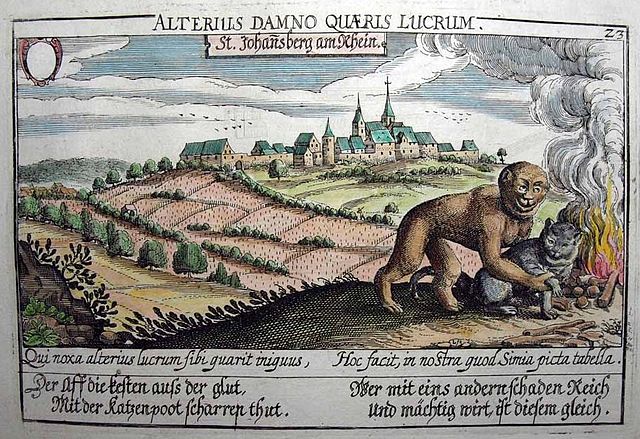The Monkey and the Cat is best known as a fable adapted by Jean de La Fontaine under the title Le Singe et le Chat that appeared in the second collection of his Fables in 1679 (IX.17). It is the source of popular idioms in both English and French, with the general meaning of being the dupe of another.
J.J. Grandville's illustration from the 1855 edition of La Fontaine's Fables
An adaptation of Gheeraert's figure illustrating an engraving of the Schloss Johannisberg vineyards.
A satirical French view of military glory from Napoleonic times
Joannes Sambucus, 1567: the version with a dog
Jean de La Fontaine collected fables from a wide variety of sources, both Western and Eastern, and adapted them into French free verse. They were issued under the general title of Fables in several volumes from 1668 to 1694 and are considered classics of French literature. Humorous, nuanced and ironical, they were originally aimed at adults but then entered the educational system and were required learning for school children.
An Aubusson tapestry from the 18th century illustrating "The Lion in Love"
Facsimile of the manuscript of "The Sculptor and the Statue of Jupiter"
The practical lesson of "The frog that wanted to be as big as an ox" on a 19th-century trade card







